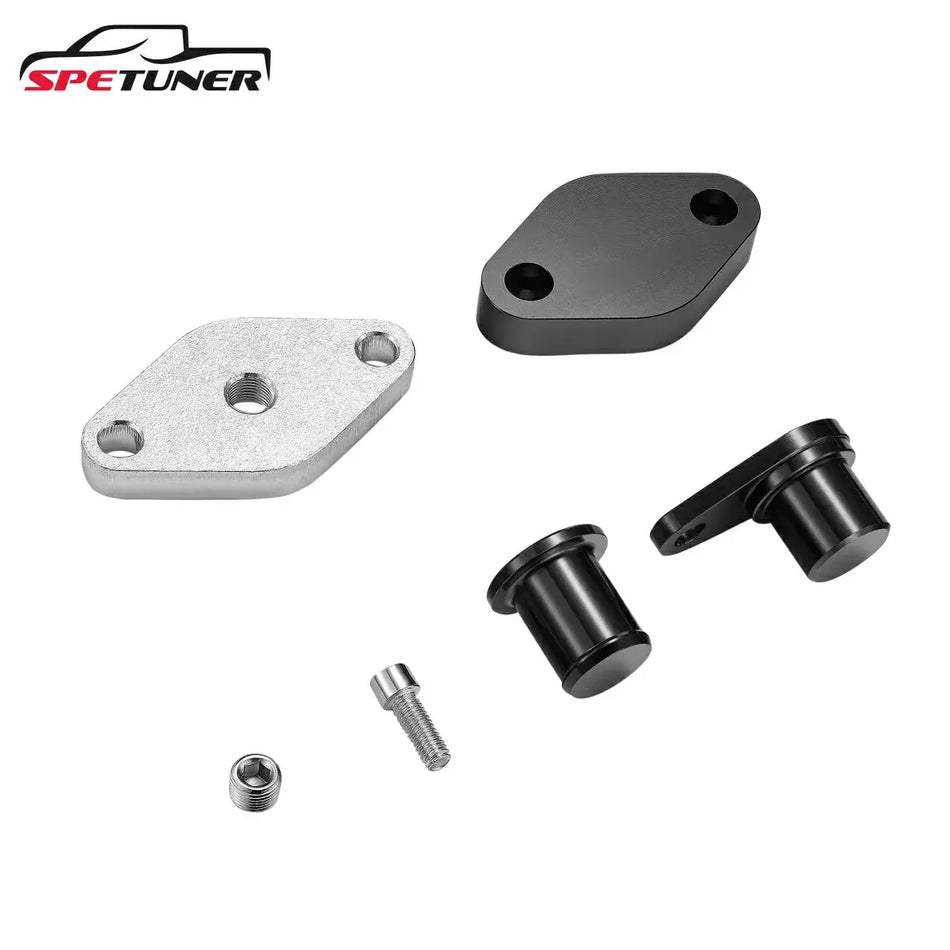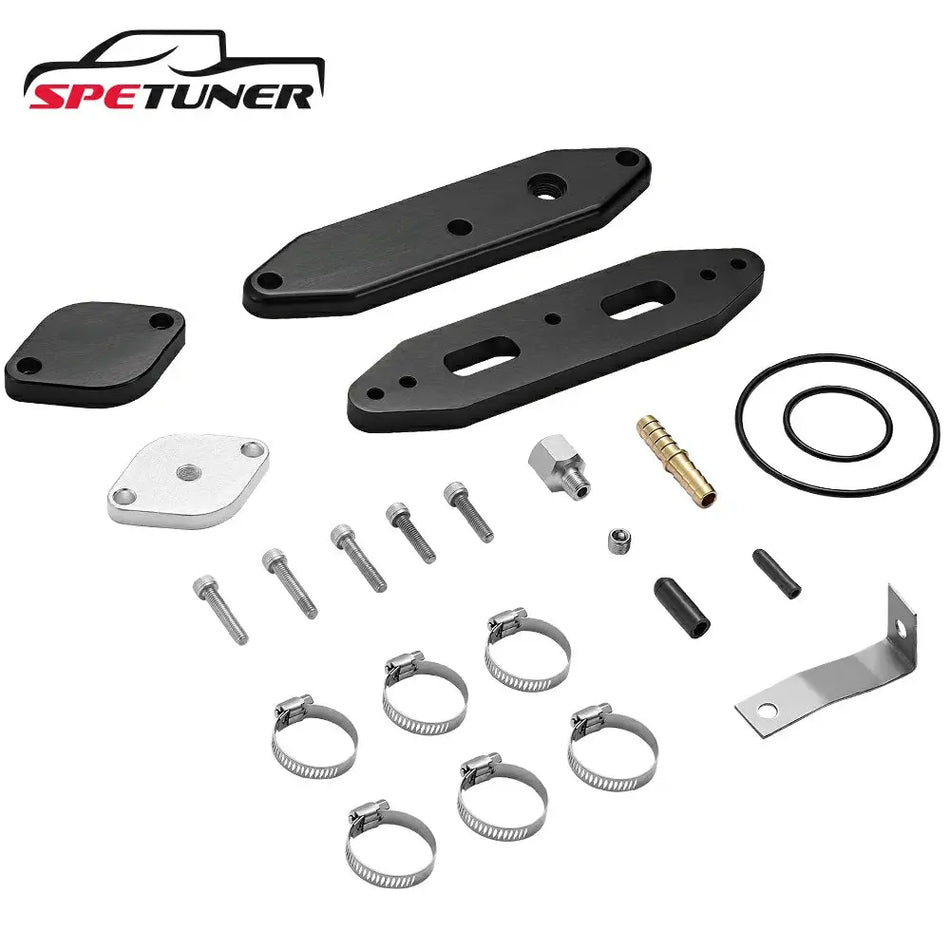Why Changing the 6.7 Cummins CCV Filter Is Crucial for Performance
Author Introduction
Hi, I’m Lars from SPETUNER. We build and test diesel performance parts daily on Ford Power Stroke, RAM Cummins, and GMC Duramax trucks. This guide blends shop-floor experience with OEM data so you can diagnose CCV issues on a 6.7 Cummins and fix them the right way.
The CCV (crankcase ventilation) filter sits on top of the valve cover under the plastic dress cover. It separates oil mist from blow-by before vapors are routed back into the intake, protecting the turbo, intercooler, and emissions system. When the filter clogs, crankcase pressure rises and oil can be pushed into the intake—hurting performance, economy, and emissions hardware.
1. Introduction to the 6.7 Cummins CCV Filter
What is the CCV Filter and Why Is It Important?
The CCV filter 6.7 Cummins is a vital component in your engine's crankcase ventilation system. It filters out oil vapors and contaminants, preventing harmful buildup that could damage engine parts. This system helps keep your engine clean and running smoothly, ensuring optimal performance.
Without the CCV filter, Cummins 6.7 working properly, oil contaminants can enter the intake system, leading to increased engine wear, lower efficiency, and higher emissions. That’s why regular maintenance and 6.7 Cummins CCV filter replacement is essential to keep everything running as it should.
Neglecting the CCV filter not only risks engine performance but also accelerates the buildup of sludge, which can clog other critical components, like the turbocharger and intercooler, leading to costly repairs.

A saturated CCV filter can restrict airflow and increase crankcase pressure.
2. How to Identify a Bad CCV Filter
6.7 Cummins CCV Filter Service Intervals (By Model Year)
- 2007.5–2018 Models: Replace every 67,500 miles (approx. 54 months).
- 2019–2024 Models: Replace every 75,000 miles (approx. 60 months).
Note: Your cluster may show a “Perform Service” reminder specifically for this emissions maintenance. Always follow your specific owner’s manual and on-screen prompts.
Signs of a Failing CCV Filter
- Rising oil consumption and more frequent top-offs.
- Oil film inside the turbo inlet/charge pipe; oily residue around CCV housing.
- Rough idle, decreased fuel economy, or blue/white smoke on cold start.
- Noticeable blow-by/vapors; sometimes accompanied by the “Perform Service” message.
Quick Diagnosis Checks
- Oil cap test: With the engine idling, carefully loosen the oil cap—excess "chuffing" or the cap “dancing” vigorously can hint at elevated crankcase pressure caused by a clogged filter.
- Visual Inspection: Pull the dress cover; inspect the CCV housing and inlet pipe. If you see fresh oil pooling, the filter is likely saturated.
3. What Happens If the CCV Filter Is Clogged?
Impact on Engine Performance
If your 6.7 Cummins CCV filter becomes clogged, the impact is immediate. The primary function of the CCV filter is to strip oil vapors from the crankcase gases. When clogged, these vapors have nowhere to go but to build pressure.
Increased crankcase pressure can cause oil to leak past seals and into the intake manifold. You may notice a decrease in power, poor acceleration, and sluggish engine response.
Long-Term Damage Risks
Neglecting a clogged CCV filter doesn’t just affect short-term drivability. Over time, excessive oil carryover creates sludge that coats the turbocharger compressor wheel, the EGR valve, and the intercooler. This reduces thermal efficiency and can lead to expensive component failures.

4. Recommended Maintenance: Severe Duty vs. Highway
While the OEM recommends replacement roughly every 67,500 to 75,000 miles, real-world usage often dictates a tighter schedule. Many diesel mechanics recommend inspecting the filter every 30,000 to 40,000 miles if you fall into the "Severe Duty" category.
Factors That Shorten Filter Life
- Driving Conditions: If you often drive in dusty environments, such as construction sites or rural areas, the filter may clog faster due to the increased intake of dirt and debris.
- Towing and Heavy Loads: Frequent towing or hauling heavy loads can put additional strain on the engine, causing the CCV system to work harder and clog the filter more quickly.
- Cold Weather: In cold climates, condensation can build up in the engine, leading to quicker filter contamination. If you live in an area with harsh winters, you may need to check the filter more regularly.

5. CCV Replacement vs. CCV Delete/Re-Route
Many enthusiasts consider a CCV delete or re-route to permanently solve the issue of oil entering the intake. Below is a comparison to help you decide.
Compliance Note: Tampering with emissions systems is not street-legal in the U.S. Use re-route/delete solutions for off-road/competition use only. Always check local laws before modifying.
| Option | Pros | Cons | Best For |
|---|---|---|---|
| Replace with OEM (68002433AC) | Restores OEM function; emissions-legal; predictable fitment. | Will eventually clog again; continues to route some oil mist into turbo. | Street-driven trucks |
| Re-Route Kit (Atmosphere/Catch Can) | Reduces oil mist in intake; keeps intercooler/turbo clean. | Not emissions-legal on public roads; requires installation work. | Off-road/Competition |
6. Conclusion
Regular 6.7 Cummins CCV filter replacement is a small job that prevents big problems. Whether you stick to the OEM schedule of ~67,500 miles or check it earlier due to heavy towing, keeping the crankcase pressure down is key to engine longevity. For off-road builds, a properly engineered re-route kit can further reduce oil mist—but always ensure you stay compliant.
FAQs
Q1: How often should I change the CCV filter on a 6.7 Cummins?
A: 2007.5–2018 at ~67,500 miles; 2019–2024 at ~75,000 miles, or when the cluster shows “Perform Service.” Always follow your owner’s manual.
Q2: What are the symptoms of a clogged CCV filter?
A: Higher oil consumption, oil film in the turbo inlet/charge pipe, rough idle, more smoke on cold start, and sometimes a maintenance reminder.
Q3: Can I clean the CCV filter instead of replacing it?
A: No. The element is designed to be replaced (e.g., Mopar 68002433AC). Cleaning rarely restores proper filtration and can damage the media.
Q4: Is a CCV delete worth it?
A: It can reduce oil mist in the intake for off-road builds, but it’s not emissions-legal for public roads in the U.S. Consider a re-route kit for competition/off-road only.
Q5: Will replacing the CCV filter improve performance or MPG?
A: If the old filter was restricted, restoring proper ventilation can improve drivability, reduce oil carry-over, and help maintain consistent fuel economy.
Q6: How do I know if my diesel filter needs changing?
A6: Signs that your diesel filter needs changing include engine misfires, reduced power, excessive smoke, and poor fuel economy. A clogged filter can restrict fuel flow, leading to poor engine performance.
Q7: How does a bad CCV filter affect my engine?
A7: A bad 6.7 Cummins CCV filter allows contaminants like oil vapors to enter the intake system, leading to sludge buildup, reduced engine efficiency, and potential damage to vital components like the turbocharger and intake valves.
Q8: Can I drive with a clogged CCV filter?
A8: It’s not recommended to drive with a clogged CCV filter Cummins 6.7. Doing so can result in poor engine performance, increased emissions, and even long-term damage to the engine and other components.
Q9: How do I replace my 6.7 Cummins CCV filter?
A9: Replacing your 6.7 Cummins CCV filter is simple. Locate the filter in the crankcase ventilation system, remove the old filter, and replace it with a new one. Be sure to check the surrounding components for any additional signs of contamination.
Q10: What happens if I skip CCV filter maintenance?
A10: Skipping 6.7 Cummins CCV filter replacement can lead to clogging, poor engine performance, higher oil consumption, and long-term engine damage. Regular maintenance helps maintain engine efficiency and avoid costly repairs.









